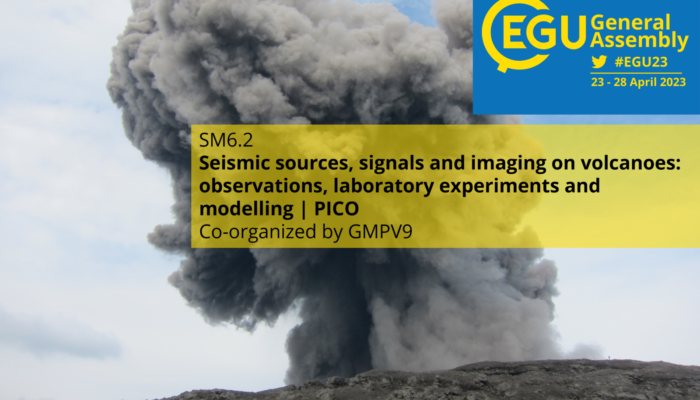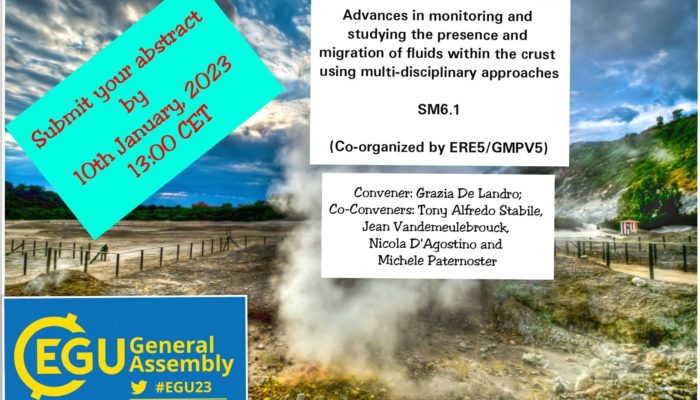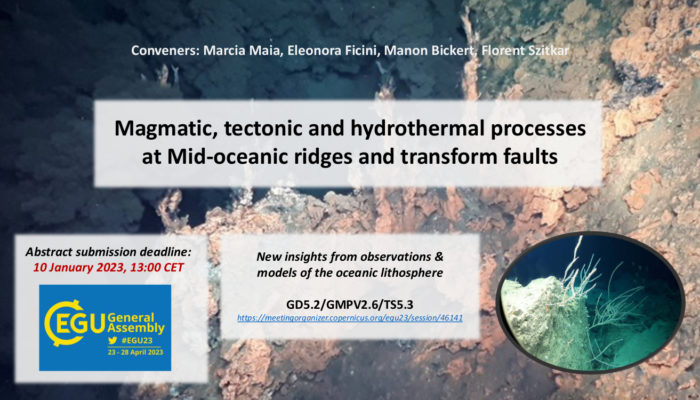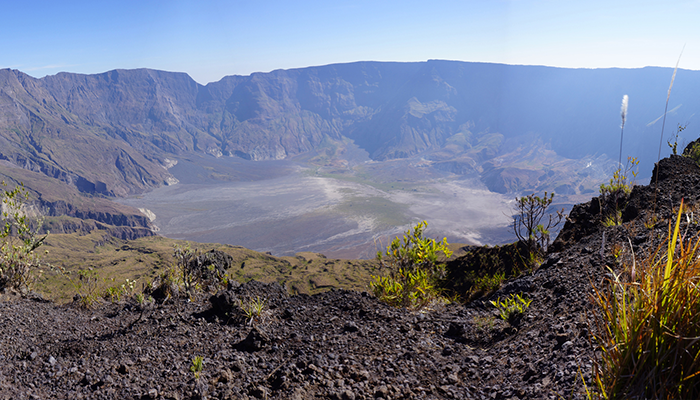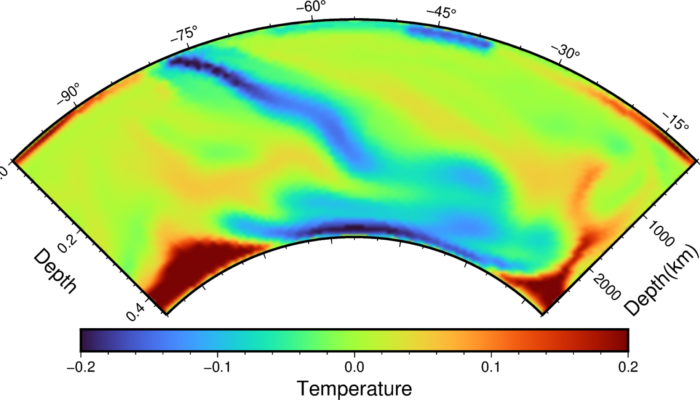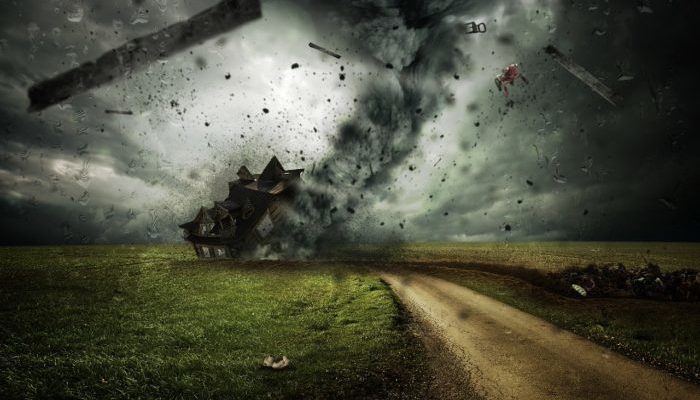The abstract submission deadline for the EGU GA 23 is approaching fast – 10th January, 2023!!! Before wrapping up 2022, please consider submitting your work to this exciting session that is being co-organised by SM and GMPV divisions. Check out below what the conveners had to say about their session: SM6.2 Seismic sources, signals and imaging on volcanoes: observations, laboratory experiment ...[Read More]
Geochemistry, Mineralogy, Petrology & Volcanology
#EGU23 session in the spotlight: Advances in monitoring and studying the presence and migration of fluids within the crust using multi-disciplinary approaches
The deadline for the abstract submission in #EGU 23 is knocking at the door (last date- 10th January, 2023). Still, Confused to choose the session most appropriate to your work?? Well, we are here to help you. Scientific Community all over the world working on different geoscientific aspects of fluid migration within the crust can submit their abstracts in the session SM6.1 : Advances in monitorin ...[Read More]
Geodynamics
Biogeodynamics
Would you like to participate in the development of a completely new research field? Here is the opportunity – Biogeodynamics! Biogeodynamics is an emerging field with exciting research opportunities. In this blog post professors Taras Gerya, Loïc Pellissier, and Robert Stern talk about what is Bio-Geo-Dynamics, how this field is developing, and what are the challenges and opportunities ahead. A n ...[Read More]
Geochemistry, Mineralogy, Petrology & Volcanology
#EGU23 session in the spotlight: Magmatic, tectonic and hydrothermal processes at Mid-oceanic ridges and transform faults: new insights from observations and models of the oceanic lithosphere
The abstract submission deadline for #EGU23 is in less than a month (10 January 2023)! It can be difficult to decide which session is the best to present your research…As in the past years, we are here to help you find the right session for you! Today we highlight the session GD5.2 “Magmatic, tectonic and hydrothermal processes at Mid-oceanic ridges and transform faults: new insights f ...[Read More]
Seismology
Opinion: self-supervised Machine Learning in seismology
Martijn van den Ende, a Postdoctoral research fellow at Université Côte d’Azur, writes about his thoughts on the state of Machine Learning in seismology… At this moment of writing, it is unlikely that any experienced seismologist is unaware of the recent advancements of Machine Learning (ML) methods in Earth Sciences. Some pioneering studies started paving the way for ML in the early 1 ...[Read More]
Cryospheric Sciences
For Dummies: How Arctic sea ice and the AMOC interact
In this post, I will talk about two famous characters of the climate system; I will define them and see how they have changed in the current context of climate change. I will also show you how these two characters interact, one influencing the other, and vice versa. Finally, let’s see how the future looks like for them and the consequences for the global climate. I hope you will enjoy this story. ...[Read More]
Geodesy
We need a new Early Career Scientist Co-Representative!
The general assembly 2023 is approaching, and the EGU Geodesy division is looking for an enthusiastic early career scientist (ECS) to take over the role of the division ECS Co-representative. But what do you have to do as an ECS-representative? And where can you sign up? Early career scientists represent a significant share of the EGU members and attendees of the general assembly. It is therefore ...[Read More]
Geochemistry, Mineralogy, Petrology & Volcanology
Tambora 1815: From eruptive dynamics to the global impact of the eruption – with Jessica Kandlbauer
reading time: 10 minutes The Tambora 1815 eruption: a brief introduction On April 10th, 1815, the Tambora volcano, located on the island of Sumbawa in Indonesia, was responsible for one of the largest eruptions in the last millennium (Stothers, 1984; Sigurdsson and Carey, 1989; Oppenheimer, 2003; Self et al., 2004; Kandlbauer et al., 2013a; Kandlbauer and Sparks, 2014). The eruption had a devastat ...[Read More]
Geodynamics
The Tectonic Memory of the Mantle
The study of the mantle aids in our understanding of the Earth’s tectonic evolution. In this week’s news and views, honours student Mr. Robert Marks shares his thoughts. Mr. Marks received his Bachelors (Hons) degree from the University of Wollongong under the supervision of Dr Nicolas Flament. The Earth’s mantle is filled with subducted slabs, which are remnants of tectonic plates tha ...[Read More]
Natural Hazards
Getting to know NH11: Climate Hazards, the new EGU Natural Hazards Sub-Division
Earlier this year, the EGU Natural Hazards Division launched a new sub-division dedicated to climate hazards. In today’s interview, Dr Steven Hardiman, a Senior Research Scientist at the Met Office (UK) and the Science Officer of this new sub-division, will share some insights about NH11 and its future development. Hi Steve, and congratulations on your new role! Please tell us about your ca ...[Read More]

